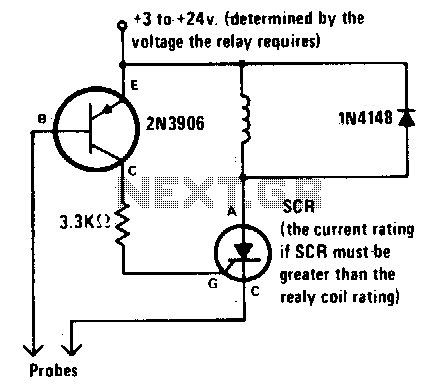
Water level alarm circuit using 555 timer

This is a simple water level alarm circuit made using a 555 timer IC. The circuit will produce an alarm when the water level reaches a preset level.
The water level alarm circuit utilizing a 555 timer IC is designed to monitor the water level in a tank and activate an alarm when the water reaches a specified threshold. The circuit operates in a monostable mode, where the 555 timer generates a pulse when triggered by the water level sensor.
The primary components of this circuit include the 555 timer IC, resistors, capacitors, and a water level sensor, which can be a pair of conductive probes or a float switch. The probes are placed at the desired water level, and when water bridges the probes, it triggers the 555 timer.
In the monostable configuration, the timer is triggered by a low voltage signal from the water sensor. Upon activation, the 555 timer outputs a high signal for a predetermined duration, which is set by the resistor and capacitor connected to it. This output can be used to drive a buzzer or an LED indicator to alert users of the high water level condition.
The circuit requires careful calibration of the resistor and capacitor values to ensure that the alarm duration is appropriate for the application. Additionally, the power supply for the circuit should be stable to prevent false triggering.
Overall, this simple water level alarm circuit is an effective solution for monitoring water levels in various applications, such as aquariums, tanks, and reservoirs, providing an audible or visual alert when water levels become critical.This is a simple Water level alarm circuits made using 555 Timer IC. Circuit will produce an alarm when the water level reaches a preset level.. 🔗 External reference
The water level alarm circuit utilizing a 555 timer IC is designed to monitor the water level in a tank and activate an alarm when the water reaches a specified threshold. The circuit operates in a monostable mode, where the 555 timer generates a pulse when triggered by the water level sensor.
The primary components of this circuit include the 555 timer IC, resistors, capacitors, and a water level sensor, which can be a pair of conductive probes or a float switch. The probes are placed at the desired water level, and when water bridges the probes, it triggers the 555 timer.
In the monostable configuration, the timer is triggered by a low voltage signal from the water sensor. Upon activation, the 555 timer outputs a high signal for a predetermined duration, which is set by the resistor and capacitor connected to it. This output can be used to drive a buzzer or an LED indicator to alert users of the high water level condition.
The circuit requires careful calibration of the resistor and capacitor values to ensure that the alarm duration is appropriate for the application. Additionally, the power supply for the circuit should be stable to prevent false triggering.
Overall, this simple water level alarm circuit is an effective solution for monitoring water levels in various applications, such as aquariums, tanks, and reservoirs, providing an audible or visual alert when water levels become critical.This is a simple Water level alarm circuits made using 555 Timer IC. Circuit will produce an alarm when the water level reaches a preset level.. 🔗 External reference





